2015-16 Fantasy Basketball: Dynasty Rookie Draft Rankings
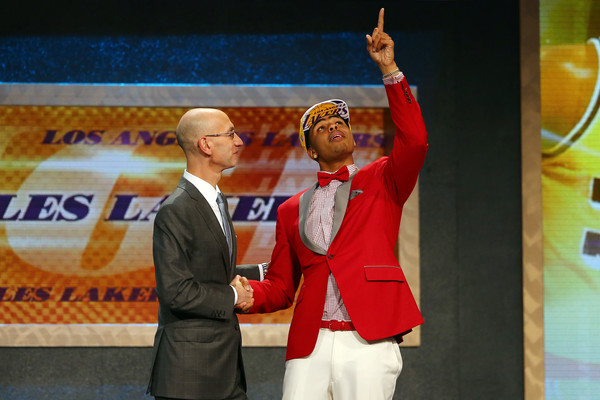
In the past month, I reviewed our 2014-15 preseason hoops content here at the Fix, and I noticed a big hole in our pre-draft coverage. We beat on the standard — and most popular — H2H and roto re-draft leagues until they were left looking like a Ronda Rousey victim, but we didn’t talk hardly at all on dynasty league formats. This actually made me want to slap myself because I didn’t just feel that I failed you, I feel that I turned my back on, well… ME, and all of the true degenerates out there like me.
Before I began writing here at the Fix a couple of years ago, I was just like some of you more than likely, an overdosed fantasy addict. I was an ESPN/Rotoworld forum surfer, looking for the next great league, with a preference to dynasty or deep keeper formats. At one point back in 2009, I had more than 20 fantasy basketball leagues. Most of them were just set your lineups and forget it types but a handful were truly active leagues with trade talks on a chat-box throughout the day.
Eventually, I wore tired of setting 20+ lineups every day and started cutting back. In 2010, I had 15 leagues. In 2011, I dipped down to 10, before dropping to eight the following two seasons. All of the leagues I kept are of the deep variety, mostly dynasty. I had four 20-team dynasty leagues, a 30-team dynasty league with a salary cap and then my home league which is just 10-teams but with deep rosters. So, I was all about the dynasty leagues, yet here I was sharing knowledge on just the standard sized league players. That is unacceptable and will be fixed this preseason, as you’re currently witnessing.
Now, I’m not ignorant when it comes to shallow or standard leagues, as being in deep leagues only further expands your league knowledge. My mental player universe is sickening. My wife often asks me why I can’t remember to grab my wallet when we leave the house, but I can tell you the 14th and 15th men on every team’s depth chart. Deep league play also helps me notice potential breakouts before they happen in-season, because a player with slowly increasing minutes and production hits your radar in 20-team leagues a lot sooner than it would — or even should — in a standard league.
If you haven’t seen it yet, my homie Sam Macey put together a 12-team dynasty mock draft with an amazingly in-depth draft recap for your viewing pleasure. I also plan to do a 16-team mock draft in October once ESPN/Yahoo open up their live drafts. So, we’ll hit on it all with mocks, rankings and added content throughout the off-season.
For those who are in dynasty leagues that aren’t in their first season, you’re likely having your rookie draft in the near future. Well, this is how I currently rank the 2015 rookie class from a fantasy perspective.
1) Karl-Anthony Towns — PF/C — Minnesota Timberwolves
The number one overall pick in the 2015 NBA draft also lands number one on my rookie rankings, Karl-Anthony Towns is the guy. You may think this is the standard, but there’s a lot of times that the top pick in the real NBA draft, isn’t the best target with the top pick in your fantasy rookie draft. Towns will start day one with the Wolves and oozes with the upside you crave in dynasty leagues. He brings elite shot blocking and rebounding right out of the gate for you, but where he really rises above is his percentages, shooting 56% from the field and 81% from the free throw line in his lone season at Kentucky. Towns is raw on offense but has a big body to score in the paint through contact, and he also possesses a pretty shooting stroke that will only get better with time. KAT could end up being a Boogie Cousins type, maybe a few less points but improved percentages and blocks. Scary, huh?
His one draw back is his foul trouble. He averaged 5.4 fouls per-40 minutes in college and as I said in my summer league notes article a couple weeks ago, KAT averaged 6.2 fouls per game in 31 minutes a night over five games. So, he may have ups and downs in his rookie season, but the upside with his all-around game is so ridiculously high that you have to take him at the top spot in dynasty rookie drafts.
2) D’Angelo Russell — PG/SG — Los Angeles Lakers
The Lakers did the right thing by passing on Jahlil Okafor and taking Ohio State guard, D’Angelo Russell. Russell played mostly shooting guard in his one year at OSU, but he still handled the ball plenty. This kid still has a lot of room for improvement (as all of these guys do) but he’s already NBA ready with his smooth left-handed shooting stroke, insane vision and passing ability. It’s annoying that the Lakers signed Lou Williams, clogging up some of the guard minutes in L.A. who already had their stud rookie, Jordan Clarkson and Nick Young, but D’Angelo should still see plenty of court time right away since he can play on or off the ball. Russell is a very unselfish player — sometimes too much — but he also takes ill-advised shots and has some bad turnovers due to out of control handles.
Regardless of his flaws, he has a majorly vaulted ceiling that he’s capable of reaching in time. Of all of his pros, I am probably most attracted to his ability to create off the dibble both for his teammates and for himself, as he flashed glimpses of in summer league. His game is just perfect for fantasy, because he can do a bit of everything. In his freshman year of college ball, his line showed just that: 34 minutes – 19.3 points – 5.7 rebounds – 5.0 assists – 1.6 steals – 0.3 blocks – 2.7 treys – 45% FG – 76% FT – 41% from deep. Seems like he has potential to become a top-20 overall fantasy player as he progresses, since that line points towards him being around the Damian Lillard/Kyle Lowry types but perhaps upside on their FG%? Time will tell, but he’s an absolute stud in the making.
3) Myles Turner — PF/C — Indiana Pacers
It’s hard not to fall head over heels for the fantasy prospects of Myles Turner. It’s no secret that I am a sucker for bigs who have plus-percentages and block shots. When you look at the college stats for Turner, you’ll see that he went for 10 points, 6.5 boards and 2.5 blocks in just 22 minutes a night. At quick glance the 45.5% shooting from the field seems a bit alarming for a 6’11” college kid, but he was 51% from inside the arc, he was a mediocre 17-of-62 (27%) from deep. Now, I know the instant thought is, “quit shooting 3s, numbskull,” but Turner has a really smooth shooting stroke and within a couple years he could be a legitimate 3-point threat.
The two NBA guys who come to mind whenever I think of Turner’s potential, are Serge Ibaka and a better shot blocking Chris Bosh. The biggest concern with Turner is lower body injuries. He’s never suffered a major injury but scouts have pointed out that he walks/runs irregularly and it makes them fear injuries will come. Despite that, NBA medical professionals deemed him 100% healthy before the draft and obviously the Pacers had no hesitation snagging him at pick 11.
Remember, Myles will not even turn 20-years-old until March, so he’s got a lot of growing up to do and lessons to be learned, but I would snag him early in rookie drafts as seen here. His fantasy ceiling is top-12 when you look at his ability to score, eventually hit treys, shoot good from the field and line, grab boards and be an elite shot blocker. In three Orlando summer league games, Turner showed all the goods averaging 18.7 points, 8.3 rebounds and 4.3 blocks(!!) while shooting 60% from the field, 80% (8/10) from the foul line and hitting 2-of-3 3PA. It’s summer but, that’s the kind of performance you want to see.
4) Jahlil Okafor — C — Philadelphia 76ers
I’ve basically said as much as can be said on Jahlil Okafor both here and here, but I’ll spit out a quick recap for you anyways. Okafor is a phenomenal offensive player around the rim, his low-post maneuvering and footwork is second to none in this rookie class. He definitely won’t come in and shoot 66% from the field as he did in college, but even if he has an inconsistent start, he should remain above 50% simply because he’s a natural in the paint. Eventually you’d like to see Okafor develop an outside the paint jumper but there’s no signs of that in the immediate future. It will be interesting to see how he does against guys that match or eclipse his size in the paint, which he didn’t encounter much at all in college.
Okafor has a lot more value in H2H leagues than roto, as his FT% isn’t as much of a dagger when it’s a h2h points or categories format. If you’re in a roto league rookie draft and he’s there beyond the first couple of picks and you’re not a punting FT% team, I’d strongly be looking to trade this pick to a team who owns Drummond, DeAndre, etc… If you don’t find a buyer right away, maybe you consider drafting him to sell him later, because there’s little doubt that he’ll be a 20 points, 10 rebounds, 1 block and elite FG% guy in the league for a long-long time.
5) Emmanuel Mudiay — PG — Denver Nuggets
Emmanuel Mudiay had his path to big minutes opened up this off-season when the Nuggets traded Ty Lawson out of town. We don’t have a ton of game tape from Mudiay because he played a season in China instead of going to college, but the lack of tape is more due to him getting injured early in the CBA season. Emmanuel didn’t return to the court until the CBA playoffs where he showed some promising skills along with some negatives, but it had to be difficult to go from out of the picture to starting at PG for a team not just in the playoffs but in the CBA finals. What is apparent though is that he’s not an efficient shooter yet. His percentages will be similar to how Elfrid Payton was his rookie season.
So, yeah, it may take Mudiay over half of the season to really settle in and adjust his game to the NBA, but as seen with Elfrid, once a player this talented gets comfortable, the fantasy production will follow. Despite his shooting woes, I really like Mudiay’s size, swagger and energy on the floor. His points may be inconsistent year one but he should still deliver solid scoring and assists in Mike Malone’s offense in Denver as well as some quality steal numbers. Mudiay may take a few years to become a true fantasy star, but top-100 this year, top-70ish next year and top-40 in his third year is a reasonable progress estimation. He’ll be a lot of fun to watch over the next decade.
6) Stanley Johnson — SG/SF — Detroit Pistons
You know it’s a really good rookie class whenever you’re outside the top-5 and having a ton of trouble deciding what order to put the guys ranked 6-10. I feel like all of the next few guys have fairly high floors and really high ceilings, so I am mostly going by their early situations. Stanley Johnson as I mentioned in my summer league notes piece, has had a really impressive first off-season. Between his standout performance in the Orlando summer league and balling out alongside his new teammate, Andre Drummond in the Drew League. He has that ever so important “it” factor, like he shows in this vine from summer league with a pure hustle block. I was looking at Stanley’s advanced stats from his freshman year at Arizona and it made me want to compare his frosh year to another wing who turned out to be pretty decent:
Now, it’s important to state that Stanley came out after his freshman year, whereas Kawhi stayed through his sophomore season, and Kawhi made some really nice strides in that extra year of college ball. His DWS (defensive win shares) leaped to 3.2, WS to 6.8 and his PPG to 15.5. I’m also not saying that Stanley is sure to reach Kawhi levels in the NBA, but I wanted it to be seen that Johnson has that kind of a game outside of the rebound levels which Leonard is definitely superior. Stanley also comes into a situation that may allow him to start right away or at least have a big role off the bench for now. Kawhi did play 24 minutes per game in his rookie season with San Antonio, but he was way down on the usage (14.5%) totem pole. SJ can score in a variety of ways, making him an important addition to Stan Van Gundy’s crew. I like Stanley to become (by his third season) a wing that goes in the top four to five rounds of fantasy drafts, so top-50ish player annually.
7) Willie Cauley-Stein — PF/C — Sacramento Kings
I freaking love Willie Trill and you will, too. (No, it’s not just because his kick game is hella strong.) He’s just an exciting player to watch on the floor with his terrific defensive skills and dunking force — he definitely doesn’t ‘fake the funk on a nasty dunk.’ It’s almost too easy to compare him to a young Tyson Chandler because of his frame, minimal offensive arsenal, poor free throw shooting and elite defensive prowess. The key difference there is Chandler came into the league straight out of high school at age 18, where Willie spent three years under coach Callipari at UK and is now 22.
One of the main reasons I’m buying in to Willie being a stud, is his hustle. It carried over from college to NBA summer league, where you’ll see in this youtube, his team loses the ball and instead of letting them run it out with just seconds left in the quarter, Wille shadows him down the court for a block. That kind of stuff is beautiful to me, and he is constantly doing whatever is needed to stop the opposing offense from scoring. Here you’ll see him guarding talented PG Jerian Grant on the perimeter, he sticks with him all the way because he knows how to create space but still staying close enough for his long arms to recover to contest the shot. This is why I think he can play at PF as well as C in the league.
Trillie may come off the bench behind Kostas Koufos early on, but I think eventually in his rookie season, he will unseat Kostas and become the starter. He’s the ideal big man to go beside superstar DeMarcus Cousins in Sacramento. Willie’s FT% limits his roto value, but his FG% (mostly dunks or put backs), rebounds and blocks will all be big benefits to his fantasy owners. In three seasons at UK, the FT% for WCS did improve greatly each year from 37% to 48% to 61%. It took Chandler until he was 27 to shoot over 70% from the line, and Willie has shown that he can continually improve and even if it stays around 60%, he’s more Gobert than DeAndre, so your team FT% is still salvageable. 8 points – 10 rebounds – 1+ steal – 2+ blocks is very realistic once he settles into a good role with the Kings, probably year two with flashes of it year one.
8) Kristaps Porzingis — PF/C — New York Knicks
I’ll be the first to admit that I wasn’t overly high on Porzingis leading up to the NBA draft, but that was mostly because I just don’t have much faith in European players with so much uncertainty going inside the top-5. Furthermore, my dislike was fueled because I didn’t want Orlando (my team) to take him so adamantly that it caused me to become overly negative about any good reviews of his. Well, Orlando didn’t get the chance to take him, so after that bullet was dodged, I was able to open my eyes more to his potential.
There’s still plenty of reason for skepticism with “Zinger” because we don’t know exactly how his game will translate over to the NBA and he is extremely dainty for a 7-footer. Hopefully the Knicks can put some weight on this kid over the next couple of years, because his height alone isn’t going to get him to the rim against Rudy Gobert or Roy Hibbert types. Kristaps does possess a soft jump shot and some 3-point range that can help him keep opposing bigs on their toes with uncertainty. He has the “potential” to be in the top-3 of this class, but he’s nowhere near as safe of a bet as some of the others and may take a year or two longer to reach that level if it’s in him.
Unlike Okafor and Willie, Zinger is an ace from the foul line and I could easily see him eventually joining the rare 1+ steal, 1+ block and 1+ 3-pointer club, I’m just not confident enough as of this moment to rank him higher than this. I wouldn’t call you crazy at all though for taking him as high as 5th or 6th, if you’re betting he’ll be that good. If you’re a big believer, you’d rather take him earlier and be wrong and mad at yourself than to pass him by and be mad at me, if he turns out to be Dirk/Pau 2.0, ha. That’s not a cop out, I stick to my current ranking, but I also understand why people could be more optimistic or willing to take the gamble. The upside/potential is undeniable.
9) Mario Hezonja — SG/SF — Orlando Magic
Another flashy winger in the making here in Mario Hezonja. Most NBA fans didn’t know anything about Mario come draft night, but after reviewing several of his game tapes, I was sold that he was going to be a really good pro and was saying if the Magic passed on Willie Cauley-Stein, this was who I wanted. He’s such a hybrid between his silky shooting and his highlight reel dunking abilities as everyone saw a peak of this summer. Several scouts frequently pointed to the cockiness of Hezonja as a bad thing, but I really don’t have an issue with it as long as it doesn’t lead to stupidity, like a J.R. Smith type.
The only setback for Mario is that he’ll be a backup for the Magic behind the likes of Victor Oladipo, Tobias Harris and Aaron Gordon. Then the Magic have another young and talented wing that will need his share of the minutes as well in Evan Fournier. So, while there is definite upside long term for the 20-year-old Croatian, Mario will have to perform well consistently to continue to receive enough minutes in his first couple of seasons to be a fantasy factor. It’s too early to tell now, but gun to my head, I would put Hezonja at around 18 minutes a night his rookie season.
10) Justise Winslow — SG — Miami Heat
Much like Hezonja, Justise Winslow will start out as a backup winger for his new team playing behind some good vets, but there is more room for role progression in Miami than Orlando. Between Dwyane Wade and Luol Deng’s injury histories, there’s actually reason for optimism that Winslow will find his way into the starting lineup for at least short periods of the season. Justise is a little undersized to guard a lot of the league’s small forwards but his quickness should help out.
I’m confident that Winslow will develop a 3-point game but it may take him a bit to extend his jumper to NBA trey distance. He’s a rim attacker though and loves to draw contact and get to the line, and even though he only hit 64% from the foul line at Duke, there’s plenty of reason to be optimistic that he can get that above 70%. In the three Orlando summer league games that he played big minutes, he shot 21/30 (70%) from the line. There will be some shooting woes in his early seasons as he adapts to NBA defense, but I think he has a fairly solid floor. This kid has a lot more upside than the typical 8th best player in dynasty rookie drafts, showing you how you don’t need a top pick in your dynasty drafts to still land a really good player this year. Example: I would rather have Winslow than a guy who was touted as a top rookie a couple years ago now going into his third season, in Ben McLemore who I was not a fan of at that time anyways.
The biggest concern for Justise is his mental. He had a few incidents on the court while playing for Duke including a flagrant for grabbing fellow rookie Justin Anderson’s leg, here he sorta kicks UNC player Brice Johnson and then in the biggest game of his life — NCAA championship — he is so worried about celebrating his 3-pointer that he let’s his man get behind him and score an easy layup. I think he’ll be ok, but be warned that he’s not the brightest crayon in the box.
11) Jerian Grant — PG — New York Knicks
I’m a North Carolina college hoops fan, so I see a lot of ACC ball played, and Jerian Grant was a standout for me the last year at Notre Dame. I just love to see the leader in clutch situations take on that pressure and carry his team through it, and Grant is a helluva floor general who knows when to get it to the hot hand or to take it himself. He played over 35 minutes per game in each of his four seasons at ND (although he was suspended most of his junior year due to poor grades). The Knicks didn’t just draft him, they traded away Tim Hardaway Jr. (I know, not a big loss, but…) to land the pick to get him. He’ll play behind Jose Calderon year one, but will see plenty of minutes and the job is his to takeover. He has the size (6’5″) and skill-set to excel in the Knicks triangle offense — superb passer and finisher.
If you really need a point guard for your dynasty squad, I wouldn’t be afraid to take Grant as high as 7th in a rookie draft.
12) Devin Booker — SG — Phoenix Suns
Devin Booker has a lot of growing to do but the talent is undeniable. He’s a lethal shooter from beyond the arc, shooting 41% in college and 40% in summer league from deep. His long-term upside is the path of guys like Bradley Beal and Klay Thompson, but that’s obviously best case and far from certain. Oh, and did I mention that he’s not turning 19-years-old until October 30th? He’ll be fighting with a lot of guys for guard minutes early and it may not come right away, but by next season he should be the primary back-up SG for the Suns.
13) Frank Kaminsky — PF/C — Charlotte Hornets
The 2015 AP player of the year, Frank Kaminsky was the gem of Michael Jordan’s eye, which hasn’t turned out well most times. Big Frank can play the stretch four or five role in Charlotte and while it’s doubtful his unconventional style will translate as well at this level (made 58% of his 2pt FGA at Wisconsin), he could be a decent fantasy option. 13 points, 7 rebounds, 1 block and 1 trey with a decent FG% and good FT% is a realistic projection after he gets acclimated to the big league.
(If you’re able to select foreign players who didn’t come over to the U.S. last year but are coming this year, I’d likely insert 6’11” Serbian, Nikola Jokic here.)
14) Justin Anderson — SG/SF — Dallas Mavericks
Wait, did the Mavericks actually take their draft seriously for the first time in ages? Yes, and they got a really talented wing in Justin Anderson, who is near NBA ready after three seasons at Virginia. While his college stats aren’t going to make you think “wow, unreal upside!”, his game tape from college and summer league will. Now, it’s important to remember that we’re at 14th pick in a dynasty rookie draft, so there is a drop-off in certainty from this point on. Anderson will be a sixth man type for the Mavs right away backing up Wesley Matthews and Chandler Parsons, so he’ll see playing time right away and one injury away from starting, and opportunity is king in fantasy. In six Vegas summer league games, Anderson averaged 31 minutes, 17.5 points, 4.2 rebounds, 1.5 assists, 1.2 steals, 0.5 blocks and 2.5 triples while shooting 43% from the floor, 38% from treyville and 90% from the line. Don’t expect this to be the case in his rookie season or maybe anytime soon in the NBA, but there is plenty of upside and opportunity to like him at this spot, even if he went 21st in the NBA draft.
15) Cameron Payne — PG — Oklahoma City Thunder
The Thunder found them a Reggie Jackson replacement with the quickness when they drafted Cameron Payne. Payne is a really smart point guard out of Murray State (Don’t doubt the small school kids, Damian Lillard went to Weber State) who seems a mix of George Hill and Lou Williams. So, he’s a scorer and can do that from anywhere on the floor whether it behind the arc, mid-range jumpers or with a nice floater. His up-tempo style is great for OKC, and Cam will be tough to stop since he can finish it himself or use his good passing/vision to dish out to one of the Thunder’s shooting weapons. He should be a solid backup PG and sixth man for a good while in the league, and that isn’t a bad thing for fantasy, plenty of those types remain fantasy options despite coming off the bench.
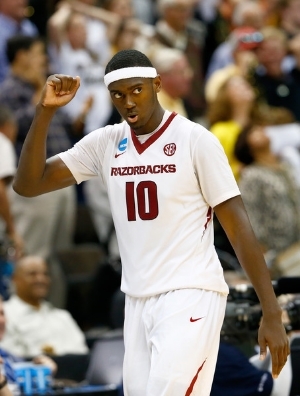
16) Bobby Portis — PF — Chicago Bulls
Man, I was really mad when the Bulls took Bobby Portis with the 22nd pick in the 1st round of the draft. I thought Portis should have went a decent bit earlier, but even though it wasn’t a pressing need, the Bulls couldn’t pass him by. Portis has NBA ready size and could have been really good early on in the right situation, this is not one of them. Bobby finds himself behind Pau Gasol, Joakim Noah, Taj Gibson and Nikola Mirotic, not as easy rotation to crack. After they took him, I was hoping they’d trade Taj Gibson, but no such luck thus far. That said, playing and learning from this group is going to help him a lot in his young years. While there’s road blocks in his way now, Pau is 35-years-old and Joakim Noah battles a lot of injuries and isn’t nearly as effective these days. Plus, both of those guys are going to be free agents after next season, so there’s definitely light at the end of this tunnel.
Portis relies a lot on his jumper, which is good and bad. It’s nice that he already has a jumper in his arsenal, but he definitely needs to grow as a player in the post on both ends of the floor. He has really nice fantasy upside with his scoring, rebounding, steals, blocks and percentages making him a great target for dynasty teams who don’t need instant production. In a year or two he could become a top-70 type player if the cards fall right. If he had landed in a more projectable spot, I likely would have him ranked around 12th give or take.
17) Rondae Hollis-Jefferson — SF — Brooklyn Nets
When you’re looking for the ideal size of a wing-man in the draft, you look for one built exactly like Rondae Hollis-Jefferson coming in at 6’7″, 210lbs plus a long wingspan. His biggest perk is his defensive game, he can guard multiple positions well and that will lead to solid steal and block numbers from a wing. He is a strong finisher at the rim, embraces the contact although he’s an average FT shooter but that can definitely improve. His biggest con is his jump shot, it needs real work if he ever wants to be more than a off the bench high energy defender. Don’t give up on his shot though, I like to think his upside is DeMarre Carroll, who also wasn’t known for his shooting out of school. While Carroll shot 56% from inside the arc, 28% from three and 60% from the line, RHJ shot 52%, 20% and 69% there. Note, it did take Carroll a few years to get things to where they are now, so do not expect RHJ to make a slight mechanics tweak to his jumper and be Carroll soon.
18) Trey Lyles — PF — Utah Jazz
I am a big Trey Lyles fan, but his situation doesn’t scream opportunity. He goes to Utah and is sitting behind two young and extremely talented guys, Derrick Favors and Rudy Gobert. I saw NBADraft.net compared him to Carlos Boozer, and while that may have made you say “ugh,” the truth is, Boozer was a really solid fantasy producer the first 12 years of his career, and I like the comparison. Lyles has the size, jump shooting and rebounding skills to be that type of guy, but as mentioned above, he doesn’t have a clear path to minutes his first few years in the league. Lyles is still too good to pass up this late in to your rookie draft, and he should be the first big man off the bench no later than his sophomore season when Trevor Booker is out of the picture.
19) Kelly Oubre — SF — Washington Wizards
I wasn’t overly high on Kelly Oubre leading up to the draft and not much has changed, but I think this is about the spot to consider him due to his long-term upside. Oubre still has a lot of maturing to do as a player, but he is really athletic and has a nice 7’2″ wingspan which makes his potential appealing. He didn’t land in a great spot in Washington where he’ll be behind the young 2015-16 sleeper/breakout candidate, Otto Porter. If Oubre can get a lot stronger, become a more consistent jump shooter, improve on his ball handling and continue to grow as a defender, he could end up being a nice NBA player. He’s just not near a sure thing to pan out for me. I’m a little worried he follows the path of Jeremy Lamb, but the scoring, rebounding and steal potential makes him worth the shot here.
20) Joseph Young — PG/SG — Indiana Pacers
As mentioned before, we’re in the dark zone where nothing is certain and most of these guys are 1-3 years away from becoming legit fantasy assets if ever. So, you may wonder how I have a guy drafted 43rd and surrounded by talented guards all under contracts for at least two years, and I get that. I just really like what super scorer Joseph Young brings to the table. I know George Hill and Rodney Stuckey each have two years left on their deals, but if Young comes in and delivers that “wow” factor in camp and throughout this season’s practices, Frank Vogel will get the guy minutes. Also, they wouldn’t be afraid to trade either guy ahead of him on the depth chart if they have faith in Young’s game, which I think they will. Young seems like one of those special sixth man types, that can come off the bench for a big time scoring spark and that’s fine for fantasy value. Scoring, 3-pointers, a couple dimes, a steal and elite FT% numbers all in play when it comes his time. He’s ranked this low only because he has a tough battle ahead until he gets a real chance.
OK, I’d love to give you a paragraph about everyone but from this point on, I am just purely giving the rankings for players 21-30. They all have potential but all either are buried on the depth chart or have a lot to work on before they’re real fantasy options. Sports-Reference.com/cbb is the place to go for college player stats.
21) Tyus Jones — PG — Minnesota Timberwolves
22) Sam Dekker — SF — Houston Rockets
23) Rashad Vaughn — SG — Milwaukee Bucks
24) Terry Rozier — PG — Boston Celtics
25) Chris McCullough — PF — Brooklyn Nets
26) Delon Wright — PG/SG — Toronto Raptors
27) Jordan Mickey — PF — Boston Celtics
28) Jarell Martin — PF — Memphis Grizzlies
29) Norman Powell — SG — Toronto Raptors
30) Montrezl Harrell — PF — Houston Rockets
Beyond this point things get even murkier, and honestly, your guess is as good as mine. It’s really just throwing darts and hoping one hits past this but if you can get fair trade value for a pick beyond 16, I’d highly consider moving the pick with a player for an upgraded player or to move up in the draft. This is a really stout draft class, with a much better than normal top-18 but don’t foolishly trade sure thing assets to get a guy you’re not really confident in. Before you make a move, hit me up on Twitter and see what I think of it for an unbiased opinion.
For more fantasy hoops analysis and to have any questions you may have answered, follow Zack on Twitter @BigZack44


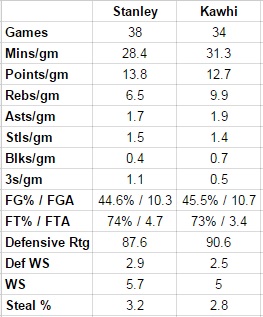
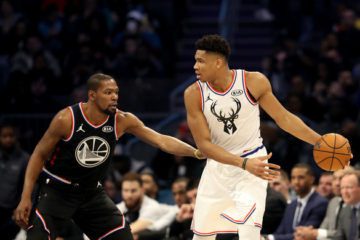
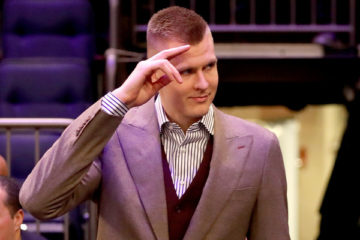
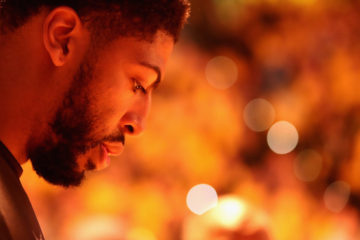
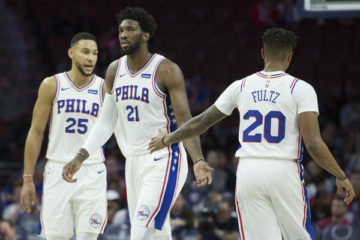
1 Comment
Nice article, Zack. My comment concerns Bobby Portis. I agree that the current situation is not ideal, but agree with you that its not bad to learn from some solid vets for a couple of years while developing his game. Its my opinion that Portis has a skillset, mentality and work ethic similar to Paul Milsap and David West….and his fantasy prospects depend on how much he contributes in steals/blocks/3’s down the road (which Milsap developed more so than West).